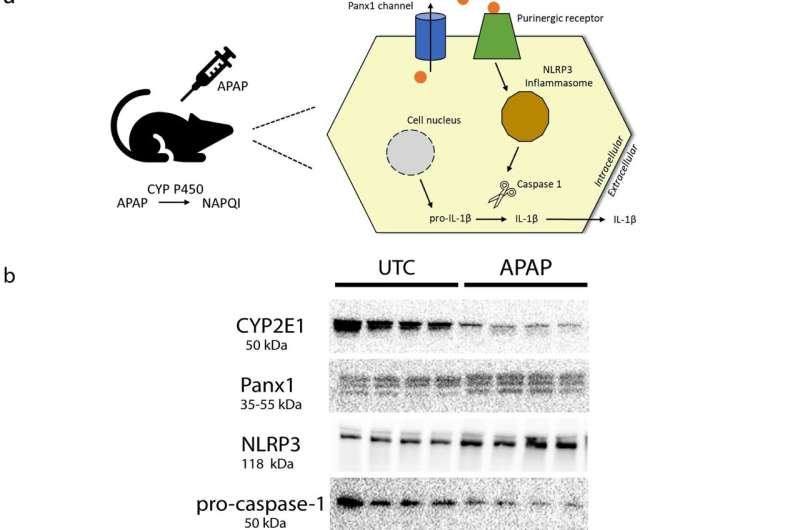This article has been reviewed according to Science X's editorial process and policies. Editors have highlighted the following attributes while ensuring the content's credibility:
fact-checked
proofread
Team develops nanobody technology against liver inflammation

Mathieu Vinken, a professor in the In Vitro Toxicology and Dermato-cosmetology (IVTD) lab at the Vrije Universiteit Brussel, and doctoral student Raf Van Campenhout have developed a technique based on nanobody technology to prevent liver inflammation.
Nanobodies, or single-domain antibodies, are fragments of antibodies that can selectively bind to a specific antigen. Because they are simple to produce and react in very specific ways, they are often used in various biotechnological, therapeutic and, diagnostic applications.
"During a previous research project financed by an ERC Starting Grant, my team discovered that a specific type of molecule, pannexins, played an important role in certain inflammatory diseases," says Vinken.
"Pannexins are tube-like molecules found in the cell membrane. In a healthy state, these tubes are closed, but when diseased, they open, allowing substances through, leading to inflammation and, eventually, cell death. By using nanobodies, the opening of these pannexin tubes is suppressed, interrupting the inflammatory reaction."
Vinken is working with Professor Nick Devoogdt and postdoc Timo De Groof from the Molecular Imaging and Therapy research group at VUB. Devoogdt and De Groof specialize in creating and visualizing nanobodies.
"VUB has a long tradition of research into nanobodies," says Devoogdt. "This tradition began with Professor Raymond Hamers. In 1989, with his wife, Cécile Casterman, and Serge Muyldermans, he discovered that camel blood contained a smaller sort of antibody. The discovery led to several spin-offs and various innovative therapeutic techniques."
"Through the work of Mathieu Vinken, we have discovered another promising research direction. Specifically, we have been able to show that nanobody technology works much better in the event of paracetamol overdose than the current remedy using acetylcysteine."
"Nanobodies close pannexins with unprecedented efficiency," says Vinken. Until now, research has been conducted in vitro and on a mouse model. In the next step, a clinical study will investigate possible side effects.
The potential of pannexin-specific nanobodies to treat more complex disease states in combination with other agents will eventually be investigated. The findings were published in the Journal of Nanobiotechnology. The team has also filed a patent application with a view to further (commercial) development of the technology and attracting investors or business partners for collaboration.
More information: Raf Van Campenhout et al, Nanobody-based pannexin1 channel inhibitors reduce inflammation in acute liver injury, Journal of Nanobiotechnology (2023). DOI: 10.1186/s12951-023-02137-1
Provided by Vrije Universiteit Brussel




















